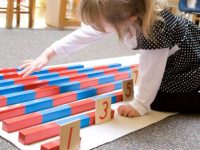How to improve memory in a 2−3 year-old child
In early childhood, when a toddler learns to walk, his interaction with the world expands greatly. More objects become available for his perception. Now a new stage in the development of memory begins. Children proceed to master the meaning of subjects and actions in accordance with their purpose and functions. In this process, he depends on his cultural and hygienic skills. The child’s movements become more accurate and coordinated, which provides some autonomy from adults and expands the area of his freedom. During this period, kids’ memory becomes more flexible and agile. At 2 years old, a child can form own ideas about objects, distance, size, direction of movements, actions and events. Kids learn subjects and their signs by touch and within the situation.

Peculiarities of children’s memory (from 2 to 3 years).
At the beginning of the 3rd year of a child’s life, the ability to reproduce the object in its absence develops greatly. Now the gap between remembering and knowing is about a year. In the 2nd year of life, a child can remember a familiar face only after a break of 1.5−2 months.
Verbal-semantic memory also begins to rapidly develop: now the child reacts more to the meaning of the words — not to the rhythmic and melodic structure as before. In the 3rd year of life, a baby with well-developed semantic memory skills can understand every single word in simple conversations. This period includes the growth of vocabulary, grammar mastering, and the development of understanding and pronunciation. Expanding vocabulary and accumulation of life experience lead to the onset of the first ideas about the moral norms and rules of behavior in a child.
You can expand your child’s semantic memory by:
- discussing fairy tales,
- reading poems or learning them by heart;
- retelling short stories.
It is especially important that the kid understands the content of a story or a poem. In early childhood, understanding of a literary text is achieved only if it matches the activities that the child is performing at the moment of reading. For example, a game with cars can be accompanied by reading a poem about cars. Thus, at the age of 2 to 3 years, verbal memory develops in unity with shape and movement memory.
In early childhood, observation plays a special role in memory development. Draw your child’s attention to different aspects of objects (shape, color, size, smell, etc.). Turn your baby’s learning activity into a survey. This way you’ll show your child how to form a complete and exact image in memory.
This feature of kid memory was precisely formulated by Ushinsky.
«If you want your child to memorize something firmly, then force all his nerves to participate in the process of remembering. Make his vision participate in remembering by showing a map or a picture. Encourage such senses as smell and taste to participate in memory development, too. With such a friendly assistance of all senses in the act of assimilation you’ll win a victory over lazy memory. Of course, such a complex memory development is slow, but don’t forget that each next victory will be easier.»
The memory of a child depends on his interests. Such intellectual feelings as surprise, satisfaction from understanding, admiration, and doubt contribute to the emergence and sustaining of interest in the object of knowledge and learning activity itself, providing better memorization.
It should be remembered that overly emotional material leaves only vague memories. Sometimes it happens that a child liked the cartoon so much, but he can’t remember what it was about. It’s not because of the kid’s bad memory, but because of emotional overload. For memory development activities you should create a calm atmosphere, but choose the material, in which your child is highly interested.
One of the important means of providing involuntary memorization in small children is a daily routine. Arranging your child’s day you help him accumulate his first life experience by performing the same actions in recurring situations. This develops memory on a primitive level.
So the main features of children’s memory from 2 to 3 years are:
- Children’s memory depends on the fullness of perception.
- Children’s memory depends on their interests.
- Daily routine helps in improving kids’ memory.
Activities for the development of memory for 2−3-year-olds.
The development of memory occurs when an adult encourages a child to reproduce his experience in games, speech activities, retelling, remembering, making stories and fairy tales. For the children from 2 to 3 years, the use of the acquired knowledge should follow soon after the memorization.
Here are some nice activities, which can help improve your child’s memory.
What’s missing?
You can use different objects (toys), pictures or cards for this activity. Put the objects on the table. At the moment of memorization, you should tell your kid about the objects — their color, size, and functions. After this, let the child name the objects himself. Ask: «What is this? / Who is this?» After this hide one of the objects and ask what is missing. Start with 3 objects, then gradually increase their number.
What’s new?
This activity for memory development is based on the same principle as the above one. But now you don’t hide the object. Vice versa you should add one. The child is to determine what’s new.
Hide-and-seek.
Hide 3 or 4 toys together with your child. Then ask him to find the toys. This activity is very simple but highly useful for memory improvement in little children.
Bring me.
Ask the child to bring 2−3 of the subject. He must remember the objects and bring them to you.
Let’s remember.
Constantly remember with your child, what he did yesterday, in the morning, some time ago, what events happened in the street, with whom of his friends he played, etc.
Hide the picture.
Discuss a picture with your baby. Then close the book or hide the picture and ask your child questions about the picture.
Find the pair.
The mother shows the child a picture and hides it behind her back. She asks the kid to find the same picture in the group of cards. The kid should find the pair from memory.
Shell game.
Take cups/glasses/boxes of different colors and put a toy under one of them. Shuffle the cups several times and ask the kid to find where the hidden toy is. Gradually increase the number of toys or cups.
«Memory» — light version.
You’ll need 2−5 different cards or pictures. Put all the cards before the child. Discuss what’s in the pictures. Then turn all cards face down so all the pictures are hiding from the baby and not visible to him. Ask the child to find where a certain card is.
Although these activities are very simple, they’ll help your child’s memory improve significantly, which is useful for his further learning abilities.





Amazing! Its actually awesome, I have got much clear idea on the topic of from this piece of writing.